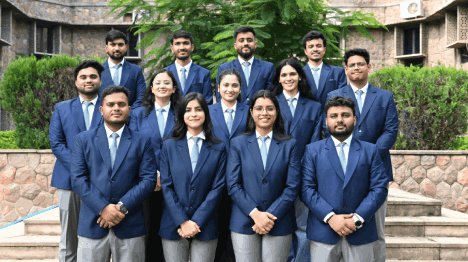- About Us
- Academics
Schools
Programs
General Information
- Faculty
The faculty members and researchers working at IIHMR University come from varied backgrounds including, but not limited to medicine, public health, management, economics, statistics, demography, human geography, social and behavioral sciences, rural development and pharmaceuticals.
- Admissions
- Research
.Publications & Journal
- Executive Education
Executive Programmes
- Online Certification Courses
ONLINE CERTIFICATION Courses
- Training
- Placements
- Fee Payment
- NAAC
- IQAC
- NIRF
- Webinars
- About Us
- About IIHMR University
- Board of Management
- Academic Council
- Board of Studies
- Research Board
- Institutional Review Board
- Finance & Audit Committee
- Departmental Research Committee
- Chairperson's Message
- President's Message
- IIHMR University Act
- Infrastructure
- Collaboration
- Ranking
- Board of Studies (School of Digital Health)
- Awards & Accolades
- Academics
- Institute of Health Management Research
- School of Pharmaceutical Management
- School of Development Studies
- School of Digital Health
- SD Gupta School of Public Health
- MBA (Hospital and Health Management)
- MBA (Pharmaceutical Management)
- MBA (Development Management)
- MBA (Healthcare Analytics)
- Master of Public Health
- Student Manual – Cohort 9 (2021-2023)
- Master of Public Health (Cooperative programme with Johns Hopkins University)
- Ph. D.
- MBA CSR & ESG Management (Executive)
- MBA Sustainable Business Management (Executive)
- Common Information for all the Programs
- Academic Calendar
- Student Handbook 2020-21
- Committees
- Policies
- Annual Exam Calendar
- Library
- Faculty
- Officers of University
- Dean of Institute of Health Management Research
- Dean of School of Pharmaceutical Management
- Dean of School of Development Studies
- Dean of SD Gupta School of Public Health
- Dean of School of Digital Health
- School of Digital Health
- Faculty List A to Z
- Faculty List Designation Wise
- Faculty List School Wise
- Admissions
- Research
- Executive Education
- Training
- Placements
- Alumni
- Events
- Job Openings
- Contact
- Research
Mobile Technologies and Health-A Pilot Study
Agency : Oxford Department of International Development and Hertford College, Oxford University, United Kingdom
“Mobile technologies and health: a pilot study in India and China” – a comparative study of Gansu (China) and Rajasthan (India) on mobile phone use and its implications for rural healthcare access was conducted to find answers of the following research questions. The survey followed as a first stage of qualitative research in Rajasthan and Gansu in 2013 to explore people’s behaviour with regard to mobile phones and rural healthcare access with the following objectives:
- What role does the mobile phone play as a conversion factor in the translation of healthcare resources into healthy lifestyles in rural India and rural China?
- Does access to mobile phones influence well-being and healthcare seeking in these contexts?
- How large is the impact of mobile phone use on rural access to healthcare?
The major objectives of the study were to understand technology use as an important upstream element of mHealth as well as to generate further questions for our research agenda. The project was designed to investigate emerging questions for research and policy in developing countries at the intersection between technology, health, and development. It specifically addressed the role of mobile phones in the rural areas of China and India, and its implications for equitable access to healthcare. The outcomes of the study were not only of academic interest, but could also benefit public and private actors working on mobile communications and rural healthcare. Data has been collected from 400 households in a total of 16 villages of Udaipur and Rajsamand districts of Rajasthan. Respondent selection followed a 3-stage stratified cluster sampling approach. In the first stage, villages were selected from the fieldwork districts. In Rajasthan, this was done in proportion to the population size of the villages and stratified by their distance to their sub-district headquarters. In the second step, households in the villages were randomly sampled. Because of flexible resources and strong partners, the survey team listed all households in the selected village segments and drew the sample accordingly. Enumerators were assigned to these selected households and located them with the help of printed satellite maps, compasses, and smart phones with satellite navigation software. In the third step, household members above 18 years of age were randomly recruited for the interview using Kish selection grids.



